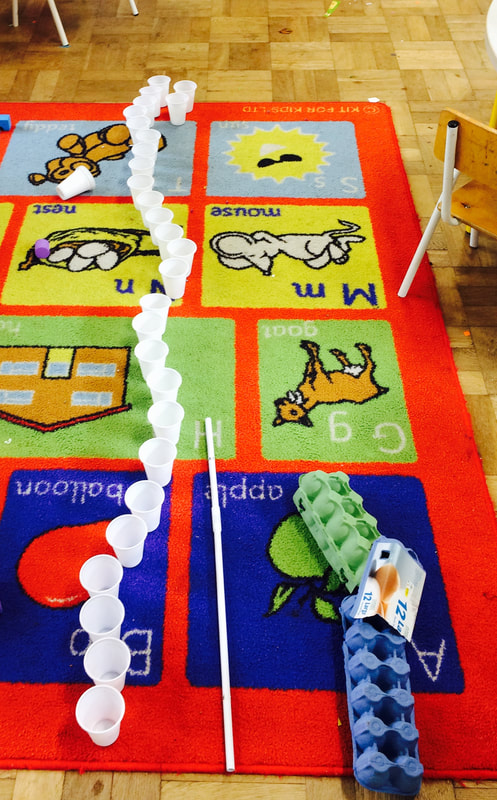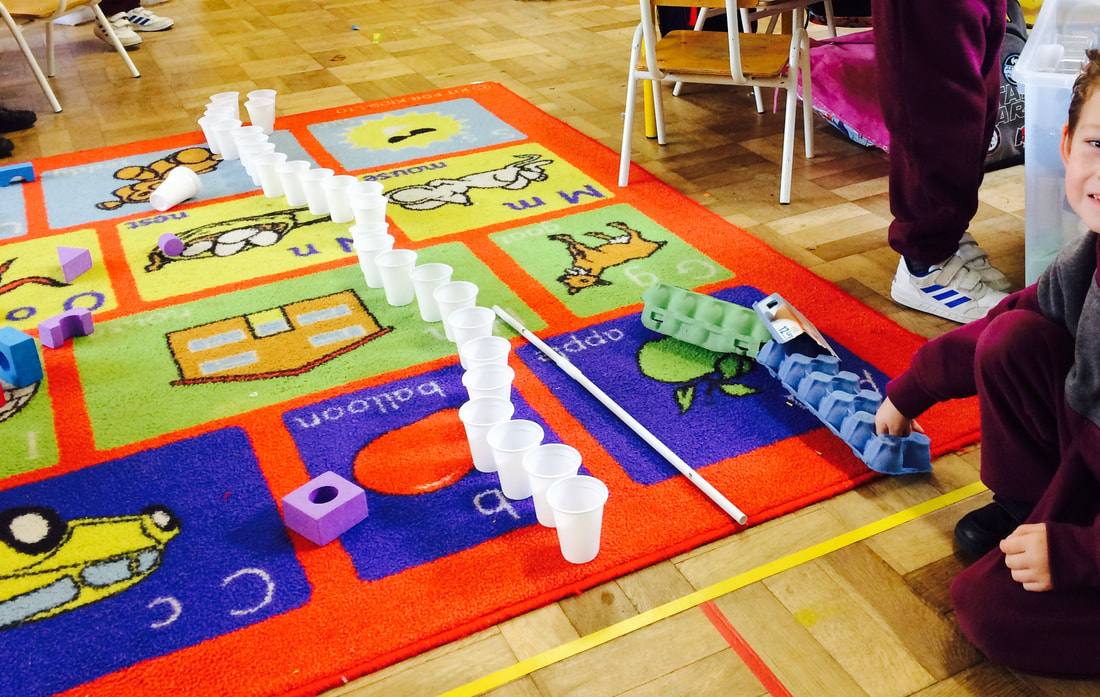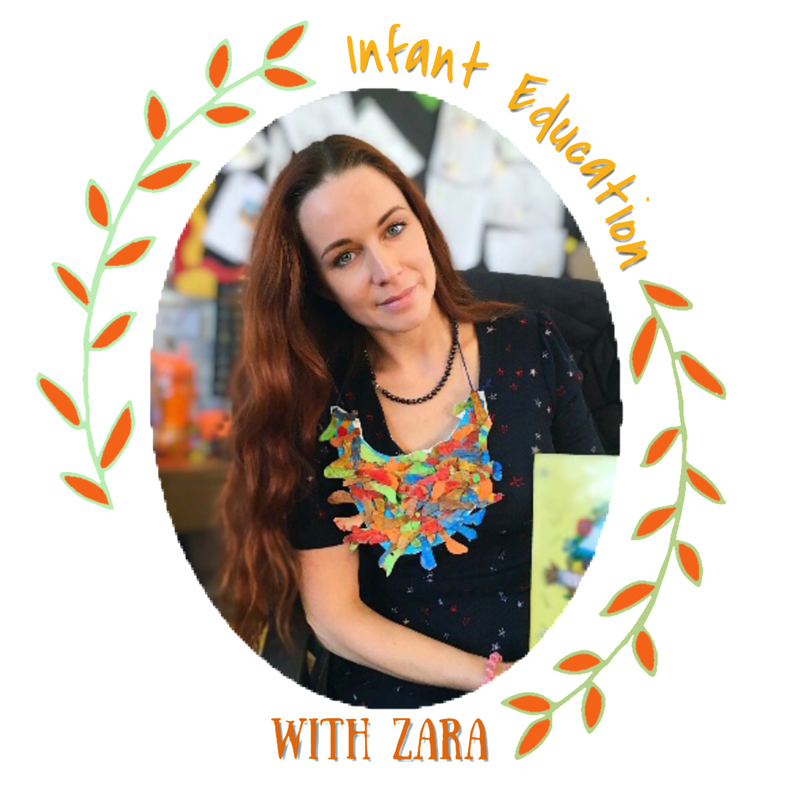Playful Lesson Planning...Strand: Measure Strand Unit: Length Content Objective: 1) Develop and understanding of the concept of length through exploration and discussion and use of appropriate language. 2) Compare and order objects according to length I Do:It is always nice to start a new topic or lesson with a story. The children and I go to the carpet for this lesson. Read a story that discusses length. Talk about the topical language. Long, short, longer, shorter, longest, shortest etc. We Do: Lay out a random set of odd socks (have two socks very close in length). Discuss different length using the language above. Say, "How can we know for sure which is the longest?" Discuss/record their ideas. Say "We need to measure them from the same point/line". Set up a mini washing line on the middle of the circle and have the children hang the socks according to length. Say, "We're going to start with the longest Jamie, and as always we'll start to hang from the left" Use maths language to record your findings. Say "The stripy pattern sock is shorter than the black sock" etc. You Do: Give children a selection of objects to sort by length in their copy, have a line drawn to show a starting point for measuring. Have them stick the objects in the correct order. Preparation is key here, I had the little bits cut and ready to go. Copies lined and glue sticks on hand. I modelled with the whole class using the visualiser before they went off to do their own. Once the activity is completed have the children discuss with the neighbour asking the relevant questions i.e. "Which object is the longest?" etc. 2 Minute DisplayThis quick display took me 2 minutes to do. I had it up before the children completed the activity. We use it as our plenary and discussed everything we had learnt. Assessment and FeedbackAssessment and feedback is key to good teaching and learning. Read my blog on Assessment Made Easy for more ideas and thoughts on quality assessment methods. The next day, after I corrected the copy work I called up the group of children who made any small mistakes in their work. Using 2 examples of correct work in copies, I asked the children if they could identify where they went wrong. We discuss how it is important to start at the same point to take the correct measurements. The importance of active, hands on learning...
Bringing the old and the new together!At Halloween we had been learning about triangles and we made these witches in our scrap books (It's nice to display scrap book work if you can). I left the page beside them blank to do this activity below. I drew the triangle, we discuss how many sides a triangle has and the children measured strips, marked them with a pencil and cut them to size to stick along the sides. As I walked around I would use the language we learnt. Say, "You measured that too short, it needs to be longer" etc. Next to make our learning a little more kinaesthetic and work on those fine motor skills, we used sticker to identify the 3 corners. They took ages peeling the back off.  As an extension for any early finishers I wrote a number 3 under the triangle with a highlighter and they practiced tracing it. Revisiting lesson plans what work well...If a lesson works well try and follow the same plan but changing the content... At Christmas I will do this same activity using circles to make a snowman (head, body, eyes, buttons etc) and we will measure a piece of wool to stick onto the outline of a circle. I hope you get some ideas from this post and if you do use anything or think of a way to add to these lessons please share with us here in the comments section. Thanks for reading. If you want to make sure you are first to read my future posts, please subscribe to InfantEd Blog Here!
Enjoy, Zara!
1 Comment
22/12/2017 06:00:12 am
Brilliant ideas about teaching teaching math and language concepts!! Everything so well planned and organized. I can see a beautiful classroom environment and great learning going on!
Reply
Your comment will be posted after it is approved.
Leave a Reply. |

















 RSS Feed
RSS Feed